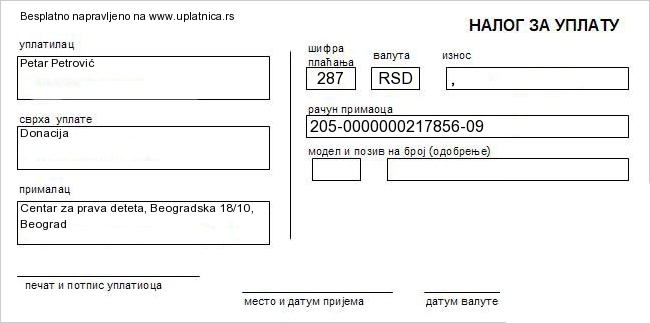
Violation of the child’s right to a healthy environment has serious consequences for children’s lives. According to the World Health Organization’s report, between 1.7 and 5.9 million deaths of children under age five each year are related to environmental pollution that could have been prevented. Air pollution alone caused 570.000 deaths in children under five due to respiratory infections such as pneumonia.
The Committee on the Rights of the Child, in its Report of the 2016 Day of General Discussion on Children’s Rights and the Environment, pointed out that violations of child’s rights to a healthy environment have lifelong and transgenerational consequences, posing a human rights challenge. This document stresses that the violation of the child’s right to a healthy environment is a global problem and that due to the states’ failure to protect the environment, children everywhere in the world suffer violations of many rights, in particular the right to life, development, health, food, water, education , culture, play and other.
The Child Rights Centre published the Analysis of the Republic of Serbia’s Legislation from the Perspective of Child’s Right to a Healthy Environment, which mapped to which extent the existing legislative framework regulating various areas of environmental protection recognised the aspect of child rights. Having in mind the complexity of this area, the Child Rights Centre analysed the legislation of the Republic of Serbia regulating the areas of air pollution, waste management, water pollution, biodiversity protection, climate crisis and adaptation to climate change and noise protection, in the context of exercising the child’s right to a healthy environment, as well as legislation relevant to the exercise of the child’s right to information about environmental protection, children’s participation in policy-making and the exercise of the child’s right to education. These areas have been selected on the basis of the research “Rights of the Child to a Healthy Environment in the Republic of Serbia“, conducted by the Child Rights Centre in March and April 2021 in order to map the key challenges in the exercising of child’s right to a healthy environment from the perspective of children and youth.
The findings of this analysis have shown that the legislative framework does not sufficiently recognise children as a particularly vulnerable group, nor does it contain provisions that would ensure an additional level of protection for children or specifically apply to children. The legislative framework contains the obligation of adopting strategic documents in all these areas, but this obligation is also of a general nature and does not include a clearly prescribed obligation to define special measures in strategic documents for protecting the rights of the child and ensuring the child’s right to a healthy environment. This practically means that the child’s right to a healthy environment at this moment is realised only indirectly through the general protection of all citizens and the exercise of their right to a healthy environment, as guaranteed by the Constitution. However, this approach indirectly means compromising the rights of the child, because it does not respect the specific characteristics of children as a particularly vulnerable group and the fact that environmental pollution has a much greater impact on the health of children than on other citizens, and therefore requires additional protection measures.
The analysis was conducted as part of the project “Child Rights in Policy and Practice” implemented by the Child Rights Centre in cooperation with Save the Children International, and funded by the Government of Sweden.
Announcement shared by:
